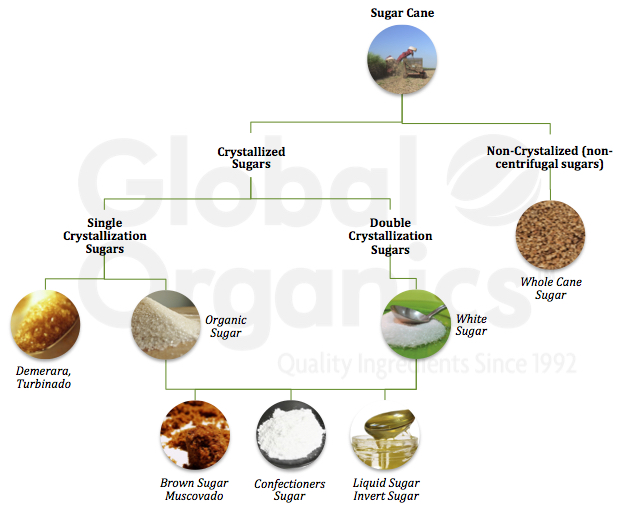Maximizar Rendimientos Y Minimizar Costos: Estrategias Avanzadas Para La Optimización Química Del Procesamiento De Azúcar De Caña
In the realm of walking cane sugar handling, the pursuit of making the most of yields while simultaneously decreasing prices stands as a formidable difficulty that needs a calculated blend of advanced chemical optimization methods. Amidst this complex internet of techniques lies the pledge of opening untapped potential and reinventing the really significance of sugar manufacturing.
Chemical Evaluation for Efficiency
Chemical analysis plays an essential function in enhancing the effectiveness of sugar walking stick handling by giving critical insights into the structure and residential or commercial properties of the raw materials. By carrying out comprehensive chemical analyses on sugar walking cane samples, cpus can establish the exact concentrations of sucrose, glucose, fructose, and other components existing in the raw material. This info is important for enhancing the numerous stages of the sugar walking cane handling chain, from milling to crystallization.
In addition, chemical evaluation makes it possible for processors to determine pollutants such as natural acids, healthy proteins, and minerals that can impact the high quality and yield of the last sugar product. By quantifying these contaminations, processors can apply targeted strategies to get rid of or minimize their impacts, inevitably enhancing the overall performance of the handling plant.
In addition, chemical analysis helps with the tracking of process parameters such as pH, temperature level, and viscosity, allowing processors to make real-time adjustments to ensure optimal conditions for sugar removal and condensation. Generally, a complete understanding of the chemical structure of sugar walking cane is crucial for making the most of yields, reducing prices, and preserving high product top quality in the sugar production market.

Enzyme Utilization for Enhanced Yields
With a tactical method to enzyme utilization, sugar cane cpus can substantially enhance their returns while preserving operational efficiency in the production process. Enzymes play an important role in sugar walking stick processing by breaking down intricate carbs right into less complex sugars, hence raising the general sugar extraction efficiency. By including specific enzymes customized to target the different parts of sugar cane, such as cellulose and hemicellulose, processors can improve the release of sugars throughout extraction.
Enzyme application uses the benefit of maximizing sugar returns from the raw product while lessening the power and resources required for handling. This causes a more sustainable and affordable production procedure. Furthermore, enzymes can help check my reference in decreasing handling time and enhancing the general top quality of the sugar product. Via cautious selection and application of enzymes, sugar walking cane processors can optimize their procedures to accomplish greater yields and success.
Ph Control for Ideal Processing
Enzyme utilization for raised yields in sugar walking stick processing lays the foundation for addressing the vital facet of pH control for optimum handling efficiency. Preserving visit the website the proper pH level throughout different phases of sugar walking stick handling is important for making best use of yields and minimizing costs. By very carefully checking and changing the pH levels at various processing steps, sugar walking stick processors can improve sugar healing rates, minimize chemical usage, and maximize the general production procedure.
Advanced Filtration Techniques
Applying advanced purification techniques in sugar walking cane processing enhances the efficiency and pureness of the final product with improved separation techniques. By incorporating advanced filtering technologies, such as membrane purification and triggered carbon purification, sugar walking cane processing plants can attain higher degrees of sugar healing and boosted quality assurance.

Triggered carbon purification is one more advanced strategy that aids in the elimination of colorants, off-flavors, and recurring pollutants from sugar walking cane items. By utilizing activated carbon's adsorption properties, this purification technique improves the clearness and preference of the sugar, satisfying the high standards required by consumers and sector guidelines.
Energy-Efficient Purification Techniques
Energy-efficient distillation techniques are crucial for enhancing the sugar walking cane processing industry's power usage while keeping premium item requirements. Conventional distillation processes can be energy-intensive, resulting in higher production costs and environmental impacts (Cane Sugar Processing Chemicals). Carrying out energy-efficient distillation approaches, such as vacuum distillation or molecular purification, can substantially lower power requirements while boosting overall process efficiency
Vacuum cleaner purification involves useful reference reducing the pressure within the distillation system, which lowers the boiling point of the fluid combination being processed. This decrease in boiling point decreases the power required for evaporation, leading to power financial savings compared to standard distillation approaches.
On the various other hand, molecular distillation uses brief path distillation methods under high vacuum problems to different compounds based on their molecular weight. This technique is especially efficient for heat-sensitive substances, as it runs at lower temperature levels, decreasing energy usage and maintaining product high quality.
Verdict
